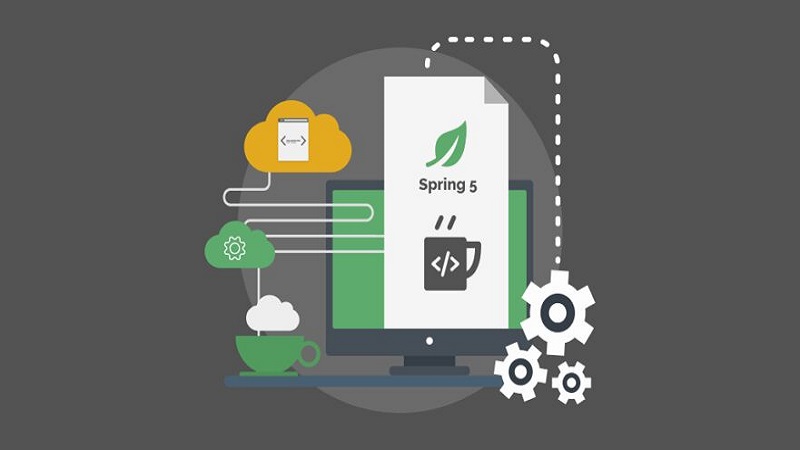Reactive programming has developed to be progressively widespread as designers could picturized greater and best well-organized approaches to manage the difficulties of contemporary apps. Here, in this guide, we explore reactive programming with the help of Spring WebFlux and determine the progression of constructing microservices. To effectively manage Big Data, it is crucial to do the task with exceptional quickness and flexibility.
At that point, the software developers recognized the importance of a multi-threaded environment capable of managing concurrent and non-blocking calls to optimize with the help of processing possessions. The majority of conventional programs handle essentially synchronous block calls. In an environment where several threads are occupied, attempting to obtain a certain resource will result in the program either blocking the newer thread or waiting for prior threads to finish processing their inquiries.
Upon completion of this post, you will possess an all-inclusive comprehension of the reactive programming functionalities in Spring Framework and the means to use them effectively in your current projects. Overall, Java Spring Framework Development authorizes designers to create strong, scalable, and sustainable apps professionally.
Overview About Spring WebFlux
Web apps make up a significant portion of the applications that are responsible for powering the technology and other industries of today. Because of the growing number of users, it is necessary to develop sturdy apps to fulfill their needs. These issues may be efficiently resolved via the use of asynchronous and distributed systems.

Presented in Spring 5, the reactive website structure is created based on the Reactive Streaming’s requirement. It offers a reactive programming prototype for creating website apps allowing designers to influence the control of reactive streaming, back pressure management, and non-blocking I/O. One thread is assigned to each request in the classic servlet technique, which is used by the majority of web servers that are written in Java.
Once a request is received, a certain thread is designated for it, and that thread is the one that is responsible for processing the request. If your server then makes blocking calls to other servers, the thread that has been allocated must wait for the answer to return before it can proceed.
Traditional web frameworks normally have difficulties in managing a high volume of simultaneous requests, resulting in sluggish response times and restricted scalability. By adopting reactive programming with alternatives to spring boot WebFlux, you may harness the capability to manage multiple links simultaneously while preserving minimal delay and maximum efficiency.
Reactive Programming with Spring WebFlux
Creating a project using Spring WebFlux is the first step in getting started with the web framework. The first thing you need to do is check. Make sure that Java and Maven are both installed on your computer. The official websites will allow you to simply download and install them if you do not already have them. Through the use of the Spring Initializer, you can generate a new project. Subsequently, you can include the essential dependencies for Spring WebFlux. In the pom.xml file that is associated with your project. Publishers, Subscribers, and Streams are those notions that fall under this category.
Fundamentals of Reactive Programming with Spring WebFlux
- When it comes to properly mastering Spring WebFlux, it is very necessary to have a thorough knowledge of the ideas that encompass reactive programming. A paradigm change from the classic imperative programming model, reactive programming places greater emphasis on effectively managing asynchronous and event-driven situations than the imperative programming model does.
- The idea of streams of events or data is at the heart of reactive programming, which emphasizes the notion. Reactive programming with Spring WebFlux takes a non-blocking technique, which provides the program with the ability to continue processing other tasks while awaiting events to take place. This is in contrast to blocking and waiting for a result, which is traditional programming.
- When it comes to reactive programming, one of the most important aspects is the use of reactive streams. These streams offer a uniform approach to the management of sequential data streams. The four fundamental elements that make up reactive streams are the Publishers, Customers, Processing units, and Transactions.
- Following the making of data or events by Publishers, Subscribers are the ones who consume them. To transform or merge data streams, processors perform the role of mediators. Subscribers can make requests to the Publisher for a certain quantity of data via the use of subscriptions, which are the link that exists between the Publication and the Customers.
- A further fundamental concept is known as backpressure. Subscribers can exert influence over the pace at which they get data from Publishers via the use of a process known as backpressure. It helps to maintain a balanced flow of events across the application and guarantees that Subscriptions aren’t overrun with an excessive amount of data.
- Functional programming concepts, such as immutability and pure functions, are highly valued in reactive programming, which also emphasizes their use. Hire Java Developers to build code that is more expected, simpler to reason regarding, and less prone to problems when they make use of these notions.
The Objective of Reactive Programming with Spring WebFlux
Application development in recent years has resulted in an abundance of real-time events of every sort, which have the effect of providing the user with an extremely engaging experience. On the other hand, to handle these, the appropriate tools are required, and reactive programming with Spring WebFlux could be the solution.
When attempting to understand Reactive, both the programming model and the rationale that lies behind it, it is beneficial to have a considerate of the issues that developers and businesses are now encountering in comparison to the challenges that were encountered ten years ago.
Let’s attempt to comprehend the two essential words that are mentioned here:
- This essentially implies processing and managing the data by making parallel use of computational resources on a single system. Asynchronous processing of stream data is a term that describes this process. Anything of any size might be considered to be the data.
- When we exchange data asynchronously, we are pushing the other side or subscriber to deal with the data. This might lead to our client or subscriber being overwhelmed with more data than it can deal with at any one moment. This is referred to as non-blocking back pressure. Additionally, it is necessary to take precautions to ensure that this component of stream management is asynchronous and does not block.
Bottom Line
In conclusion, unlocking the power of reactive programming with Spring WebFlux opens up a world of possibilities for building high-performance, scalable, and strong applications. From real-time streaming to microservices and event-driven systems, its ability to handle high loads and provide responsive, scalable solutions makes it a powerful tool for modern software development.
Continue your Spring journey with this insightful blog post : Kafka migration to Spring Boot



